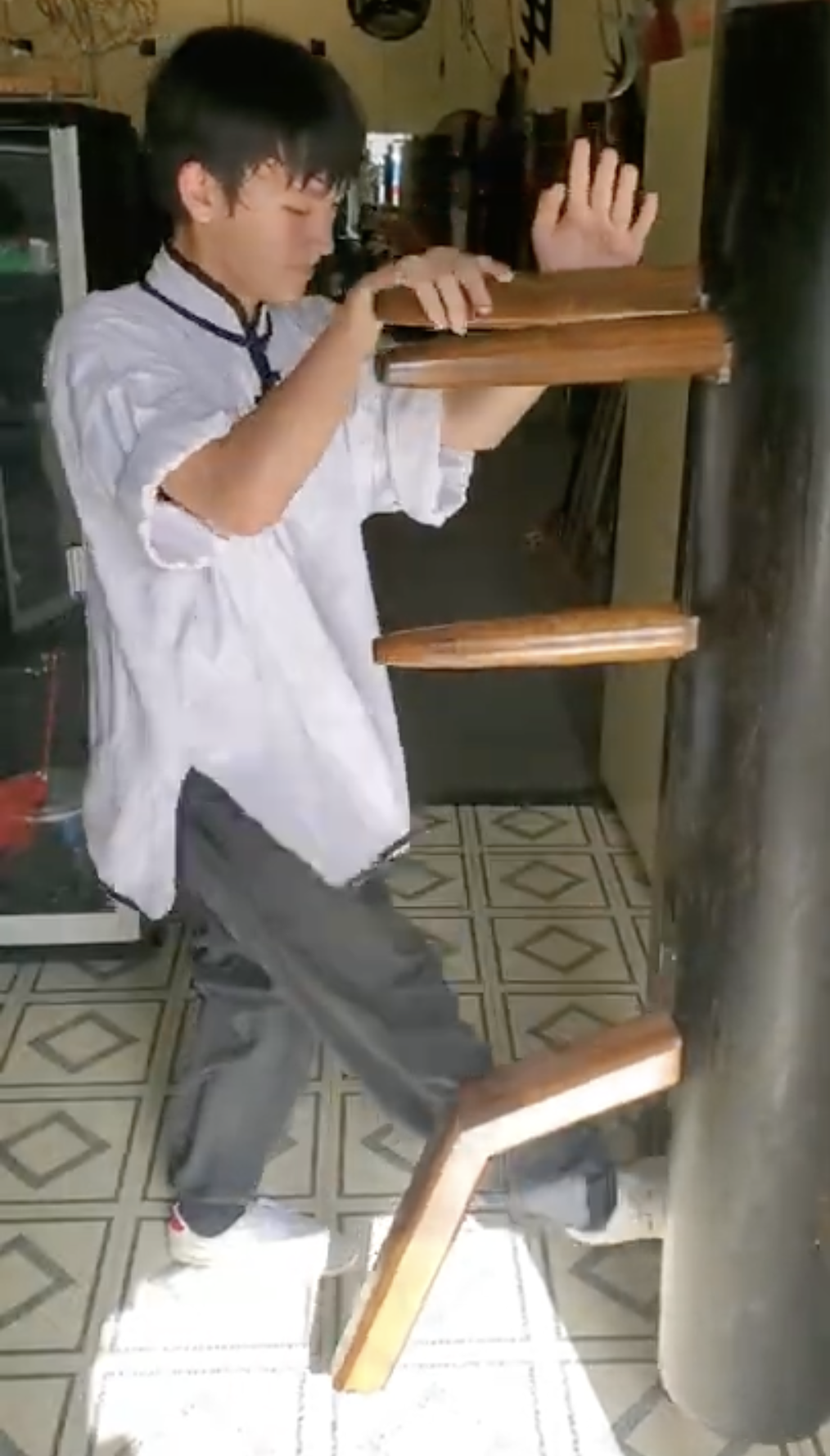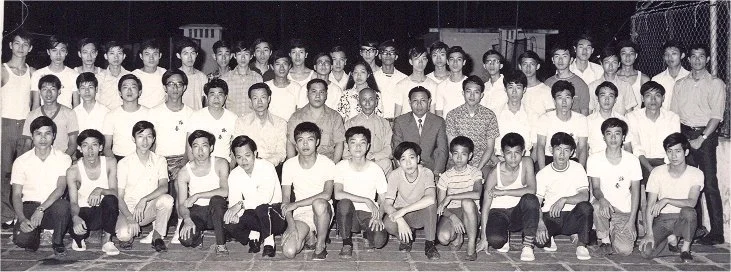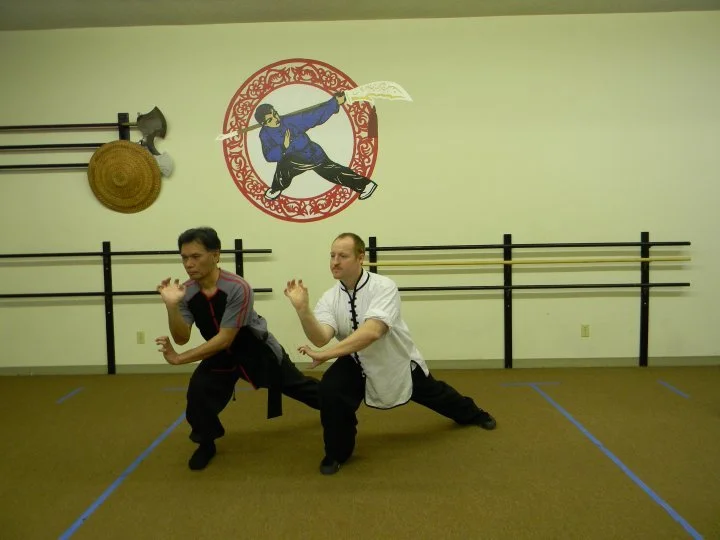
Wing Chun - Close-Range Combat Training in Victoria, Texas
Wing Chun is the most practical fighting system for close quarters. Designed for the narrow streets of southern China where there's no room for high kicks or wide movements. Everything is direct, efficient, devastatingly effective at close range.
Learn authentic Wing Chun through a lineage tracing directly to Ho Kam Ming, one of the few students who learned Ip Man's complete system. This is the same martial art that made Bruce Lee famous.
Have a question for Sifu?
What Makes Wing Chun Different
Most martial arts rely on power, reach, or athleticism. Wing Chun is built on structure, angles, and economy of motion. You don't need to be strong or flexible. You need to understand geometry and body mechanics.
Centerline Theory
Everything in Wing Chun protects and attacks along your body's centerline - the most direct path to your opponent's vital targets. Defensive movements simultaneously attack. You're never just blocking.
Close-Range Efficiency
Wing Chun was designed for crowded southern streets where you can't kick high or move far. Techniques work in tight spaces - elevators, hallways, anywhere distance is limited. No wasted movement. No telegraphing. Direct action.
Wooden Dummy (Muk Yan Jong)
The iconic wooden dummy has become the symbol of Wing Chun worldwide. It teaches timing, positioning, and how to redirect force through structure rather than strength. Advanced students train extensively on the dummy.
Attack-Defense
Wing Chun techniques defend while attacking in the same motion. Your block becomes a strike. Your parry becomes a trap. Economy of motion means you're always ahead of opponents who separate defense from offense.
What You'll Learn in Wing Chun Training
-
Three empty-hand forms teach progressive concepts. Siu Nim Tao (Little Idea) establishes foundation and structure. Chum Kiu (Seeking Bridge) adds footwork and turning. Biu Jee (Darting Fingers) develops emergency techniques and recovery.
-
Sensitivity training through constant contact with a partner's arms. You learn to feel intention, redirect force, and respond instantly without thinking. Chi Sao is where Wing Chun comes alive - developing reflexes faster than conscious thought.
-
Once you've developed foundation through forms and chi sao, you progress to the wooden dummy. 116 movements teach positioning, angles, and how to generate power through structure. Advanced training that separates casual students from serious practitioners.
-
How techniques work in reality. Partner drills develop timing and distance. Light-contact sparring tests what you've learned. Situational training - responding to grabs, strikes, multiple angles of attack.
Our Wing Chun Lineage
Sifu Michael Thomas learned Wing Chun from Li Xianda, a university student from Taiwan who taught "the three essential southern styles" - Wing Chun, Choy Lay Fut, and Hung Ga.
Wing Chun Grandmaster Ip Man visiting Ho Kam Ming in Vietnam
Li Xianda's Wing Chun came from Ho Kam Ming, one of Grandmaster Ip Man's most accomplished students. Ho Kam Ming was among the few who learned Ip Man's complete Wing Chun system - not fragments, not modified versions, but the entire art as Ip Man taught it.
Through this lineage, the Wing Chun at Zhonghua Wushu connects directly to the source - Ip Man, the master who brought Wing Chun from Foshan to Hong Kong and trained the generation that spread it worldwide, including Bruce Lee.
Beyond Wing Chun - Other Southern Systems We Teach
Wing Chun is one of several southern boxing systems preserved at Zhonghua Wushu. Advanced students may also study Choy Lay Fut (powerful long-range southern boxing), Hung Ga (tiger-crane fusion), and Jow Ga - all traditional Guangdong styles known for close-range effectiveness and explosive power.
These southern systems complement Wing Chun's efficiency. Some students specialize in Wing Chun exclusively. Others explore multiple southern styles to understand the full spectrum of southern Chinese martial arts. Sifu guides based on interest and skill level.
Ready to Train Wing Chun?
Call or text to speak with Sifu Michael Thomas about what you want to learn.
Or walk in Monday-Friday, 4:30-8pm at 2523 N Laurent and observe a class. Ask questions. See what authentic Wing Chun training looks like.
No pressure. No obligation. Just come see what traditional kung fu looks like.








